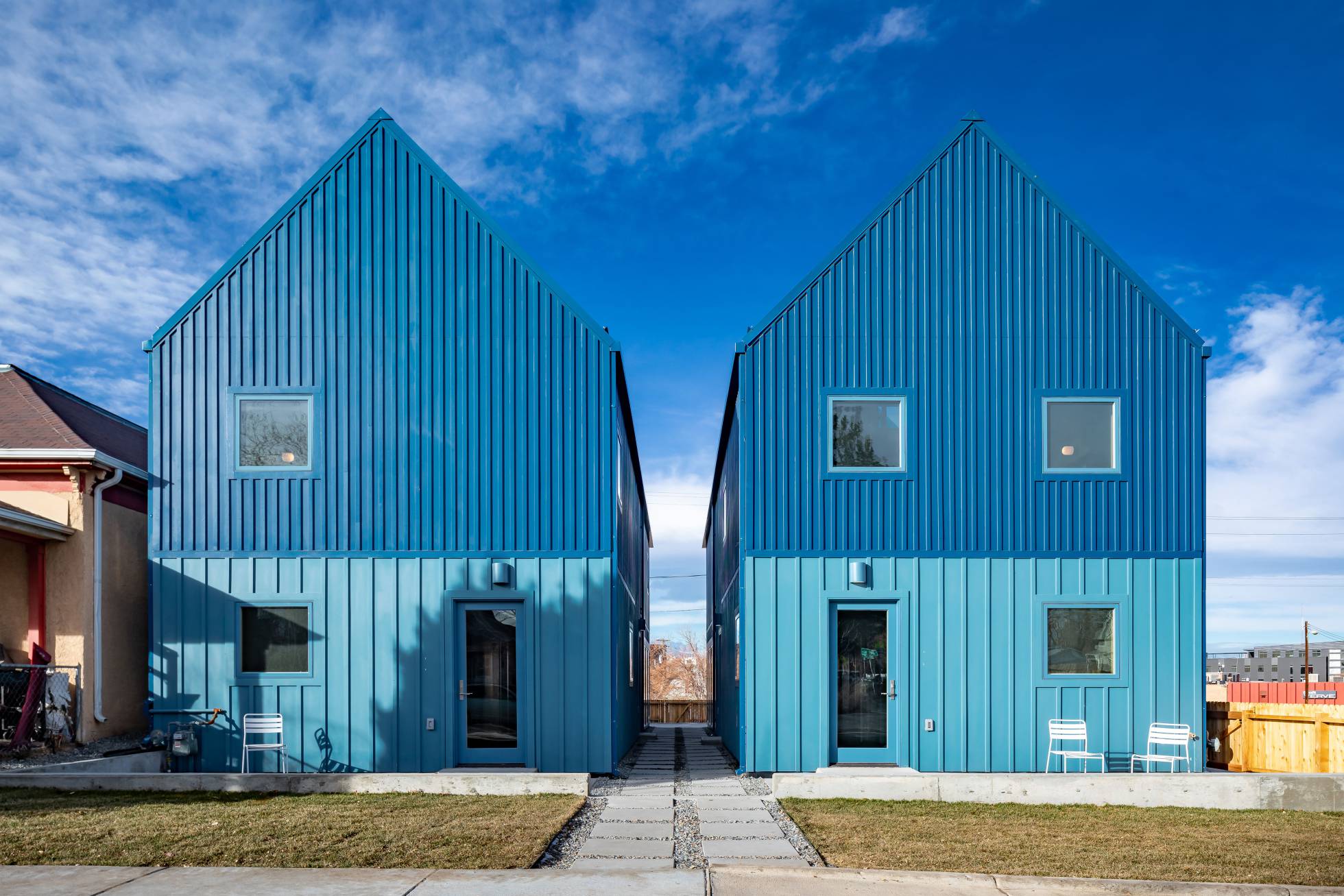
On the outskirts of Denver, architects from the Mexican architecture firm Productora are working on innovations to the house of the American dream.
Some $200 per square meter. Having to do a lot with a little can generate creativity and innovation, which the audacious Mexican firm Productora has recently demonstrated with its experimental homes in Denver, Colorado.
Productora’s architects are rethinking how to build in low-density areas, like the inner belt around Denver’s downtown, and they point to their models that rethink domestic living. Productora used inexpensive and standardized building materials to create multiple shared living spaces on a plot that would have previously been converted into a single-family home. Co-housing is fundamental to their project. “Many American cities and towns are reconsidering legislation in suburban areas that have downtowns, in order to allow four, six, or even eight units in plots where previously only one single-family residence would have been allowed,” explain Wonne Ickx and Abel Perles, two Productora architects.
During the Biennial of the Americas, whose goal is to connect North, Central and South America, the city government of Denver called for new housing proposals that would respond and adapt to changes in the contemporary lives of residents.
The Mexican architectural studio’s project was based on the fact that many residents’ living situations have changed. They observed that the large old one-family homes in neighborhoods close to downtown were more often than not used as shared living spaces. Because of Americans’ proclivity to change jobs often, their precarious economic state and an increasingly nomadic lifestyle, those grand old houses are often shared by groups of roommates or friends. So, the architects decided to design their new housing accordingly. The results are plots of land with multiple-unit construction that includes specially designed shared areas. Residents can share kitchens, large living rooms, laundry rooms, a bathroom and paved outdoor spaces. The private areas include bedrooms and workspaces. For Productora, this project displays the subtle balance between the need for privacy and the possibility of social interaction that comes with co-housing.
But the Mexican studio has taken additional factors into account. Its low cost is key to making the idea practical. The housing was built on a budget of $200 per square meter, thanks to inexpensive materials and standardized building solutions. The sloping roofs are covered in a standard blue metal that, because of its brightness and scarce use as a roofing material, gives the small complex a visual pop in an otherwise traditional Denver neighborhood. Standing out from the rest of the neighborhood’s architecture, the blue tones extend down the ridged facade, changing shade to a light blue on the bottom half of the structure. The colors and their shadows provide visually distinctive elements that reinforce the shared identity of the small complex, and also provide a new highlight to the neighborhood.
The project is innovative, smart and optimistic. Although the budget is low and the square footage of the construction is limited, the design reflects the space’s use. It is not perfect, but it achieves its aims. Inside the homes, the relatively few walls make the space feel larger, and there really is quite a lot of space. The structures at the front of the plot have high ceilings, and the kitchen and common areas have large windows that, in addition to visually connecting the two rooms, also open up the space.
Although both the blue color and the philosophical origin of each housing structure is the same, each construction is unique. The buildings in the front take advantage of the high sloped roofing to include upstairs studies or bedrooms accessible by ladder, leaving the ground floor open for other uses. The buildings in the back have a large garage door that opens upward, creating the feeling of a workshop, and converting the ground floor into a porch during the summer months.

Leave a Reply
You must be logged in to post a comment.